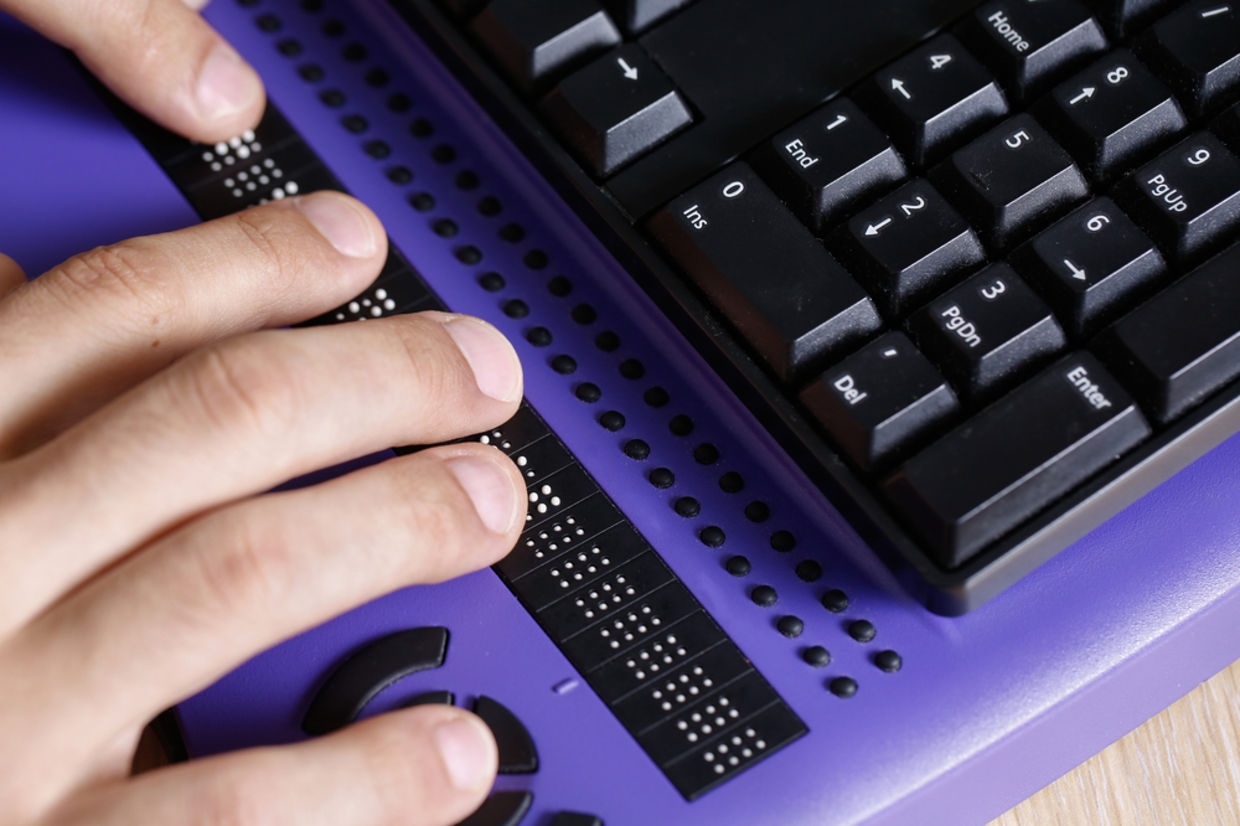
Braille computers have been around for quite a while, and now its time to make space for these new awesome technologies (zlikovec / Shutterstock.com)
Technology to help people with disabilities has come a long way in recent years, with more and more products coming onto the market every year. One especially ambitious endeavour is that of producing technology that will allow blind and visually impaired people to see again. What sounded like science fiction just a few years ago, is slowly becoming reality and a number of scientific teams have developed working tech that gives blind people the ability to experience their surroundings in new and exciting ways.
1. TINGLE THE TONGUE
What is it called: BrainPort V100
Who invented it: American scientist Dr. Paul Bach-y-Rita
How does it work: The BrainPort V100 records its wearer’s surroundings with the help of a video camera attached to a pair of sunglasses and then converts these image into electrical signals. These signals are then transmitted to a flat, electrode-studded mouthpiece, allowing the user to be perceive the pictures in the form of a tingling sensation on the tongue.
What makes it special: Seeing with your mouth might seem counterintuitive at first, but with a minimum of 10 hours of one-on-one training sessions, wearers can learn to understand the tingles and “see” not only where objects are located, but also their size, shape and if they are moving. In a clinical trial, 69% of participants were able to successfully identify objects in a recognition test after one year of training with the BrainPort.
2. COMBINING THE SENSES
What is it called: EyeCane and EyeMusic
Who invented it: Scientists from the Lab for Brain and Multisensory Research at the Hebrew University of Jerusalem
How does it work: This pair of sensory substitution devices (SSDs) provides visual information from sound and touch to help people with vision impairment to “see” their environment. EyeCane, a flashlight-like device, sends out infrared rays to translate distance into auditory and tactile cues, letting the user sense objects within a range of up to five meters. The second device, EyeMusic, is a mini-camera system connected to an app that translates colors, shapes and location of objects into soundscapes which the brain can interpret visually.
What makes it special: With sufficient training, blind people can recognize the letters of the alphabet, identify pictures of people, and even recognize specific objects in a complex visual landscape - all with the power of sound.
3. ENHANCING WHAT’S ALREADY THERE
What is it called: Assisted Vision Smart Glasses
Who invented it: Scientists from the University of Oxford
How does it work: These smart glasses are designed to make the most of that remaining sight. They are made of transparent OLED displays, two small cameras, a gyroscope, a compass, a GPS unit, and a headphone. All incoming data can be utilized in various ways, for example, brightness can be used to show depth of objects close to the wearer. A host of other information can also be processed by the system and output the information via the included headphones.
What makes it special: Most people with vision impairments still have some degree of remaining sight and can distinguish between light and dark, these glasses allow them to navigate their daily lives with maximum comfort without having to undergo any invasive surgeries. And the best part - it’s affordable for almost anyone.
4. A NEW LEVEL OF FEELING
What is it called: Blitab
Who invented it: An Austrian start-up of the same name.
How does it work: The device, dubbed “the iPad for the blind,” looks similar to an ebook but uses small physical bubbles to display letters, making it possible to view whole pages of braille text at once. "It offers a completely new user experience for braille and non-braille readers via touch navigation, text-to-speech output and Perkins-style keyboard application. It also enables the direct conversion of any text file into braille. BLITAB is not just a tablet, it is a platform for all existing and future software applications for blind readers," Kristina Tsvetanova, co-founder & CEO at BLITAB Technology says.
What makes it special: Blitab is the first ever true tactile tablet for the blind and visually impaired. The innovative smart liquid technology inside the device also makes it possible to display tactile pictures to directly address blind users that are non-braille readers.






